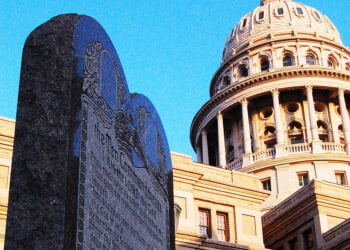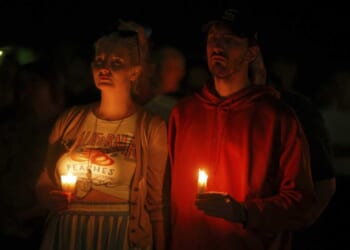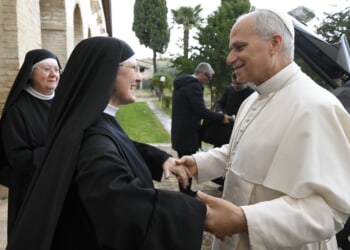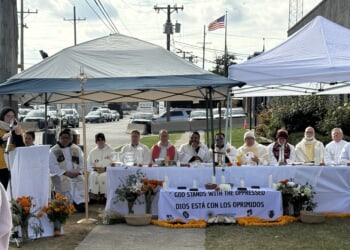It is one of the most iconic photos of the Second World War: General Douglas MacArthur wades through knee-deep waters on the approach to “Red Beach” located north of Palo near Tacloban on Leyte Island in the Philippines. His face is stern, defiant. He strides with a purpose. He is keeping the promise he made two and a half years earlier when President Franklin Roosevelt ordered him to leave the Philippines as his armies were being routed on the Bataan peninsula and his headquarters on Corregidor was besieged. After he had landed in Australia, he told a crowd greeting him: “I came through, and I shall return.”
It was a little after 2:30 pm on October 20, 1944, when MacArthur, some of his staff, and Filipino President Sergio Osmena exited a landing craft to once again walk on Philippine soil. American forces had only secured a small beachhead less than a mile inland. In his memoirs, MacArthur described the scene:
As we slowly bucked the waves toward “Red Beach,” the sounds of war grew louder. We could now hear the whining roar of airplane engines as they dove over our heads to strafe and bomb enemy positions inland from the beach. Then came the steady crump, crump of exploding naval shells. As we came closer, we could pick up the shouts of our soldiers as they gave and acknowledged orders. Then, unmistakably, in the near distance came the steady rattle of small-arms fire … The smoke from the burning palm trees was in our nostrils, and we could hear the continuing snapping and crackling of flames.
MacArthur called his approach to the beach “one of the most meaningful walks I ever took … I knew I was back again — against my old enemies of Bataan.”
MacArthur’s return almost didn’t happen. U.S. Navy leaders, led by the irascible Admiral Ernest King, wanted to bypass the Philippines and invade the island of Formosa (Taiwan) to use as a base for the planned invasion of Japan’s home islands. In late July 1944, President Roosevelt convened a conference at Pearl Harbor to discuss rival plans with MacArthur and Admiral Chester Nimitz. At a home overlooking Waikiki Beach, MacArthur and Nimitz laid out their respective plans for the next offensive in the Pacific. FDR pointed to a large wall map and asked MacArthur, “Well, Doug, where do we go from here?” (RELATED: Tokyo, Hiroshima, Nagasaki and the Man Who Ended the War)
MacArthur explained the military reasons for invading the Philippines but emphasized the moral obligation to liberate our allies and American prisoners of war. He even warned FDR that bypassing the Philippines would cost him votes in November. He reminded the president that he, too, had promised Filipinos that U.S. forces would return to liberate the islands. “Promises must be kept,” he said to FDR. It would be a “blot on American honor” to leave them to their fate at the hands of their Japanese conquerors and oppressors.
Admiral Nimitz suggested a compromise whereby MacArthur’s forces would land in the southern Philippines but bypass Luzon, while the Navy invaded Formosa. Casualties on Luzon and in Manila would be heavy, Nimitz said, and FDR agreed. MacArthur replied that American losses would be no heavier than in the past in the Southwest Pacific campaign. In the end, MacArthur’s plan was adopted — even Nimitz came around to support it.
In mid-September 1944, MacArthur’s forces landed on the island of Morotai, several hundred miles south of the southernmost Philippine island. After MacArthur came ashore on Morotai, he looked north and gestured in the direction of the Philippines and remarked: “They are waiting for me there. It has been a long time.” (RELATED: MacArthur Lands at Atsugi Airfield: August 30, 1945)
Soon after landing on Leyte, MacArthur used a mobile broadcasting unit to address the Philippine people in one of the most memorable wartime speeches in history:
People of the Philippines, I have returned. By the grace of Almighty God our forces stand again on Philippine soil — soil consecrated in the blood of our two peoples. We have come, dedicated and committed, to the task of destroying every vestige of enemy control over your daily lives, and of restoring, upon a foundation of indestructible strength, the liberties of your people. At my side is your President, Sergio Osmena, worthy successor of that great patriot, Manuel Quezon, with members of his cabinet. The seat of your government is now therefore firmly re-established on Philippine soil. The hour of your redemption is here. Your patriots have demonstrated an unswerving and resolute devotion to the principles of freedom that challenges the best that is written on the pages of human history. I now call upon your supreme effort that the enemy may know from the temper of an aroused and outraged people within that he has a force there to contend with no less violent than is the force committed from without. Rally to me. Let the indomitable spirit of Bataan and Corregidor lead on. As the lines of battle roll forward to bring you within the zone of operations, rise and strike. Strike at every favorable opportunity. For your homes and hearths, strike! For future generations of your sons and daughters, strike! In the name of your sacred dead, strike! Let no heart be faint. Let every arm be steeled. The guidance of divine God points the way. Follow in His Name to the Holy Grail of righteous victory!
READ MORE from Francis P. Sempa:
Taiwan and Trafalgar: Lessons From the Past for Today’s US Navy

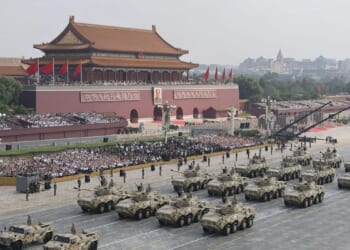

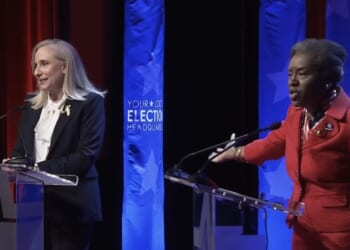

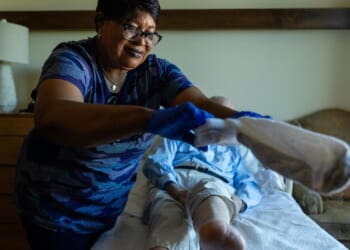
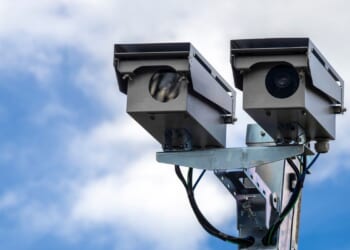
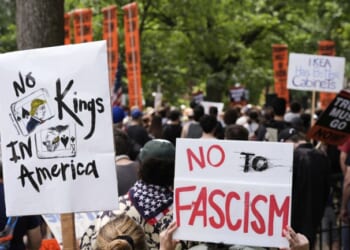

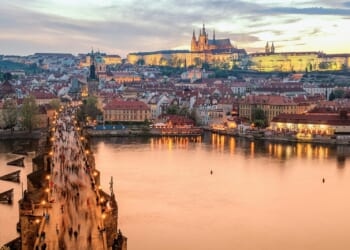
![Swalwell Promises Democrats Will Hunt 'Private Actors' Doing 'Drug Deals' with Trump [WATCH]](https://www.right2024.com/wp-content/uploads/2025/09/Swalwell-Promises-Democrats-Will-Hunt-Private-Actors-Doing-Drug-Deals-350x250.jpg)
